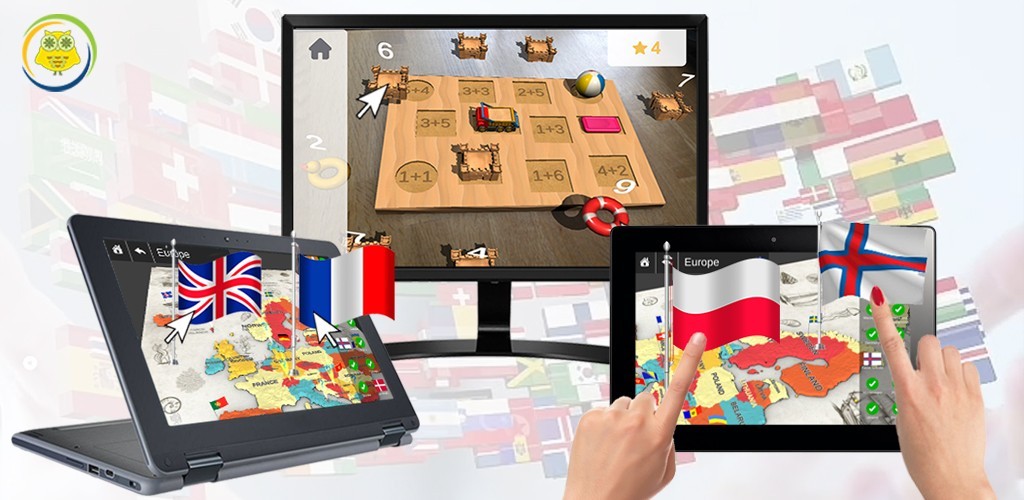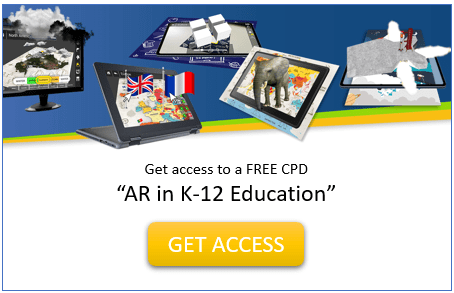Reading time: 5 minutes

Based on research, Augmented Reality for K 12 is really efficient for long term information retention, explanation of complex subjects using exciting 3D visualization and interactive elements attached to it.
Many teachers plan to use, because it’s really easy to integrate in classroom activities as well as remotely:
-
Better explanation of complex abstract matters
Augmented Reality supports visual representation of material. You can use it for showcasing abstract concepts that have been traditionally explained using 2D images inside school books. Where is the catch? In the modern world has modern teaching methods. Traditional school book pictures are replaced by emerging visual technologies.
The best example is how you are going to explain to the primary school kid what is a sphere, or tetrahedron or anything of this kind, and if not blowing that together, but within three seconds with the help of augmented reality that’s easy to get explained, just click showed shape. And it’s there for the kids to see in 3d.
They can fold unfold and to everything and anything with that. So the benefits was the AR mainly is the interaction, it could be a single user interaction will be multi user interaction, it could be by pre-designed scenario, equal the destiny of the that’s teacher can actually help keep design with design with him together. And that’s pretty much the one of the implementations of the augmented reality, simple book, everything inside or the map of the world which kids can travel and see different animals plant different animals and heritage plants and so on so forth.
-
Engagement level
Exciting teaching creates engaging learning with higher scoring at final tests. Modern students have access to technology in their day to day life and having Augmented Reality technology in the class is the standard now. Augmented Reality supports engagement with information at a new level, including interactivity and collaboration practices.
-
Information relevance
Learning with Augmented Reality provides quality access to the information. The information has a higher level of relevance because you can update for the software without a significant cost of re-printing paper school books and you can access it anytime and anywhere.
-
No extra tools required
The advancement of technology has provided multiple possibilities to save costs of teaching materials. Students can engage, review, create, share, experiment and do much more with Augmented Reality.
Augmented Reality
Augmented reality is very useful because kids can control what is real, what is not real, which is a good thing in terms of psychology. CleverBooks Augmented Reality helps enhance students’ motivation and interest, which in turn could help them evolve a better understanding in learning contents. This is one of the key impacts of Augmented Reality.
Additionally to the above mentioned benefits of AR, the opportunity to create the modern education perspective, deal with new approaches to support information flow for longer retention, in-depth understanding of the learning concepts and the opportunity to support new pedagogica approaches of teaching in combination with digital skills development.
The aspect of collaborative use of Augmented Reality is new however is in high demand because of its combination of traditional teamwork and technology use. Team work remains a key element in modern pedagogy that has focused on metacognitive skills development. Augmented Classroom has plenty of features and teaches work or features of collaborative aspects supports modern pedagogy and development of digital skills.

